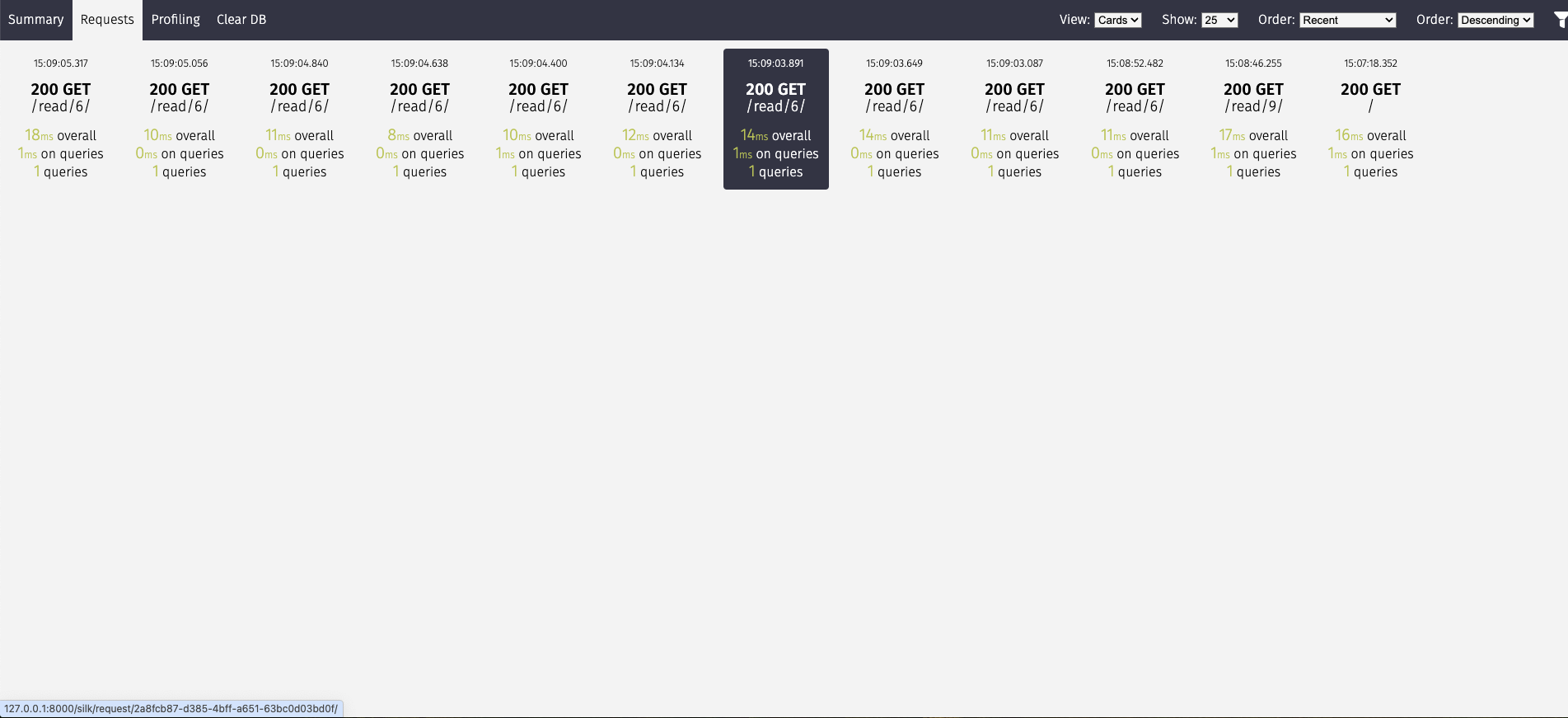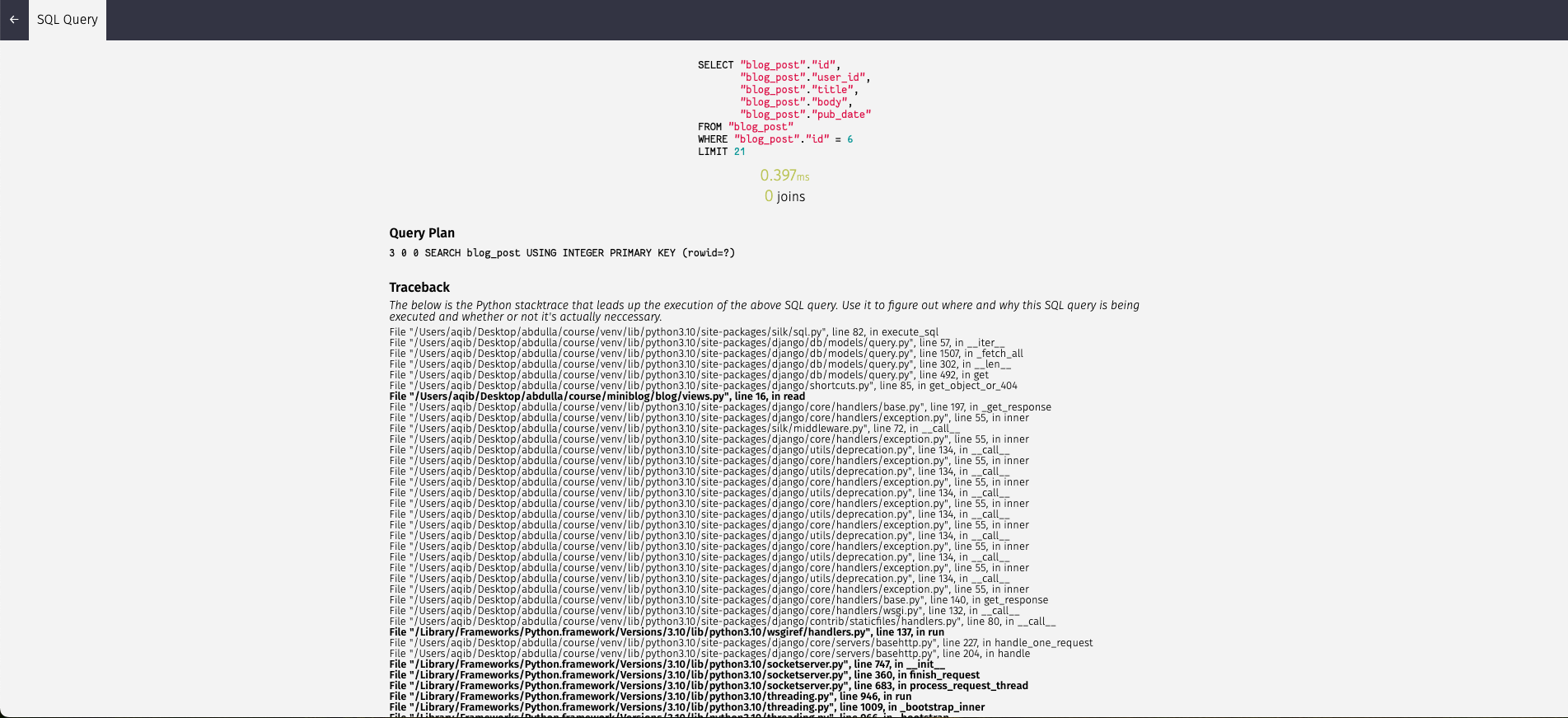When it comes to Django development, optimizing performance is paramount. Achieving an application that runs seamlessly, handles requests efficiently, and maintains optimal response times is a top priority. Enter Django Silk—a powerful profiling tool designed explicitly for Django applications. Let's delve into the world of Django Silk, uncovering its features and understanding how it can revolutionize your app's performance.
Understanding Django Silk
Django Silk serves as a beacon in the pursuit of a finely-tuned Django application. Its primary objective? To offer insights into your application's performance metrics, aiding in the identification of bottlenecks, query optimizations, and overall efficiency enhancements.
Installation Guide
Step 1: Installation
The initial step involves installing Django Silk within your Django project. Execute the following command via pip:
pip install django-silk
Add to Installed Apps: Update your Django project's settings by adding 'silk' to the INSTALLED_APPS list:
INSTALLED_APPS = [
# ...,
'silk',
# ...,
]
Middleware Setup: Integrate Silk's middleware to record requests by adding it to the MIDDLEWARE list:
MIDDLEWARE = [
# ...,
'silk.middleware.SilkyMiddleware',
# ...,
]
URL Configuration: Include Silk's URLs in your project's urls.py:
from django.urls import path, include
urlpatterns = [
# ...,
path('silk/', include('silk.urls', namespace='silk')),
# ...,
]
Step 3: Database Migration
Execute Django's migration commands to create the necessary Silk-related database tables:
python manage.py migrate
python manage.py collectstatic
Step 4: Start Profiling
With the setup complete, launch your Django development server:
python manage.py runserver
Access your application via a browser and navigate to /silk/ (or the URL you configured in Step 2). Here, you'll find the Silk dashboard showcasing performance metrics.

Pros of Django Silk
Performance Insights: One of the standout features of Django Silk is its ability to provide detailed performance insights. By tracking queries, views, and other key metrics, Silk offers a comprehensive breakdown of your app's performance.
Request Profiling: Every HTTP request receives thorough profiling, giving developers a granular view of the time taken by views, middleware processing, and database queries. This level of detail enables pinpointing specific performance issues within the application.
Ease of Integration: Integrating Django Silk into your Django projects is relatively straightforward, requiring minimal setup. This quick integration allows developers to start gathering performance data with ease.
Visualization: Silk provides a user-friendly interface for visualizing profiling data. Graphs and charts offer intuitive representations of performance metrics, making it easier for developers to comprehend and analyze the application's performance.
Query Optimization: Identifying inefficient database queries is simplified with Silk. Armed with this data, developers can optimize queries to significantly enhance the application's performance.
Cons of Django Silk
Performance Overhead: Despite its profiling prowess, Django Silk introduces a performance overhead due to data collection. This overhead can impact the actual performance of the application being profiled, particularly in production environments.
Sensitive Data Concerns: Silk captures and stores request data, potentially including sensitive information. In production environments, this raises legitimate concerns regarding data privacy and security. Proper configuration and handling of sensitive data are crucial.
Configuration Complexity: While the basic setup of Django Silk is straightforward, diving into advanced configurations might be complex for some users. A deeper understanding of Silk's configuration options may be required for optimal usage.
Storage Impact: Profiling data can accumulate rapidly, potentially consuming substantial storage space over time, particularly in high-traffic applications.
Development Environment Focus: Due to its performance impact, Django Silk is primarily recommended for use in development or staging environments. Its use in production environments might not be advisable.
Conclusion
Django Silk stands as a powerful ally in optimizing Django application performance. Its ability to unravel intricate performance details makes it an invaluable tool for developers seeking to fine-tune their applications. However, considerations regarding performance impact, data privacy, and suitable deployment environments must be evaluated when incorporating Silk into your Django projects.











